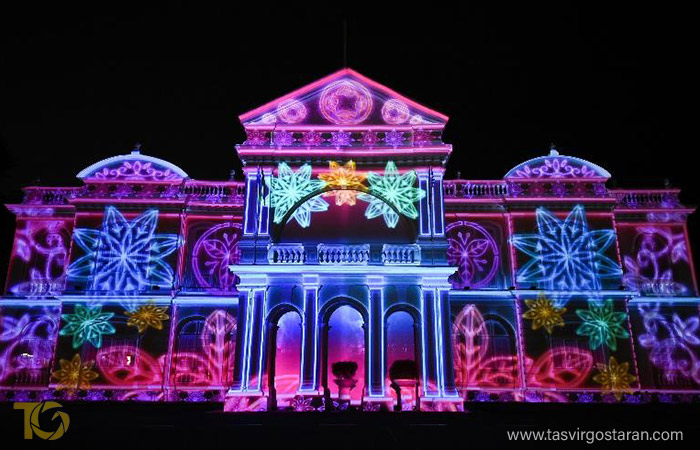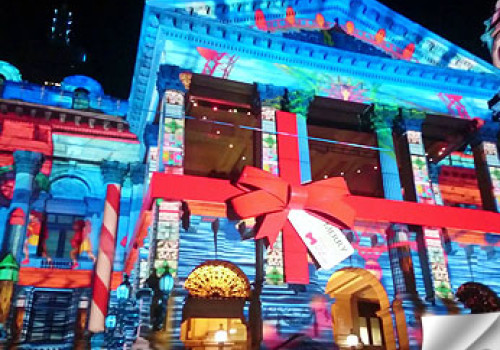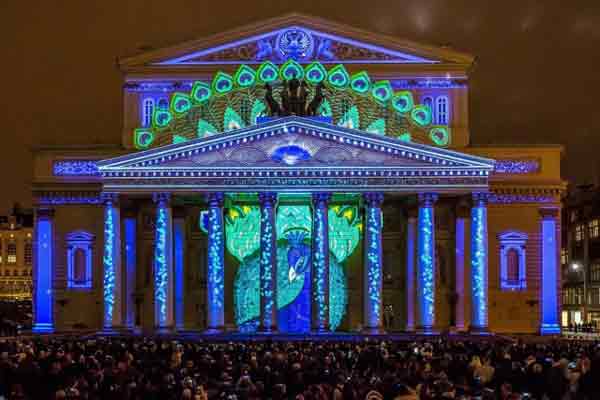3D lighting or 3D mapping is a combination of light and image with sound and music, through which unusual volumes and surfaces can be transformed into video display surfaces and by presenting 3D images and designs on surfaces in harmony with appropriate music, different display images can be presented. These surfaces can be complex industrial surfaces, display decors or building facades.
3D Building Lighting: Principles and Applications
Lighting is one of the most important aspects of creating realistic images and animations in 3D environments. These techniques allow you to simulate light in a way that makes scenes and objects look natural and appealing.
Principles of 3D Lighting
- Key Light: The key light is the primary source of illumination in the scene and has the most significant impact on the subject’s appearance. It is typically positioned at a 45-degree angle relative to the subject to create appropriate shadows and depth.
- Fill Light: The fill light is used to reduce the shadows cast by the key light. It is usually softer and less powerful than the key light and is placed on the opposite side of the key light to balance the lighting.
- Back Light: The back light shines from behind the subject to separate it from the background, adding more depth to the image. It can also help create dramatic effects.
Applications of 3D Lighting
- Animation: In 3D animations, lighting is crucial for setting the mood and atmosphere of scenes and characters. Proper lighting can enhance the storytelling and emotional impact of the animation.
- Video Games: In video games, 3D lighting is used to create realistic and immersive environments. These techniques help players feel more engaged and immersed in the game’s world.
- Architecture and Interior Design: 3D lighting is employed in architectural visualization and interior design simulations to better showcase designs and ideas. It helps in presenting the space more accurately and attractively.
- Film and Television: In the production of films and TV shows, 3D lighting is utilized to create special effects and realistic scenes. It adds depth and drama to the visual storytelling.

How to Use 3D Lighting to Highlight Facades
To highlight facades using 3D lighting, you can employ various techniques. Here are some key tips:
1. Use Different Lights:
- Combining top and bottom lights can enhance the facade. Top lights highlight the upper sections, while bottom lights emphasize the lower details.
2. Narrow Light Beams:
- Utilizing narrow beams can accentuate vertical divisions of the facade, giving the building a distinctive look.
3. HDRI (High Dynamic Range Imaging):
- Using HDRI can create more realistic lighting. These images naturally produce real light, shadows, and reflections.
4. Collect Sample Images:
- Use sample and reference images for successful lighting. These images can help you correctly adjust the lighting and create a realistic effect.
5. Use Masks:
- When lighting models, use masks to select the necessary sections. This allows you to highlight details more precisely.

Advanced Technologies in 3D Building Facade Lighting
Advanced technologies in 3D building facade lighting include innovative techniques and equipment that help architects and designers create stunning visual effects. Some of these technologies include:
LED lamps: These lamps are widely used in facade lighting due to their low energy consumption and long lifespan. LED lamps are capable of producing a variety of colors and different light effects.
- Digital tubes: These tubes, which are designed based on LEDs, are capable of displaying light effects and even video clips. This technology has replaced traditional lighting systems due to its low consumption and long lifespan.
- Digital points: Similar to digital tubes, these points are also capable of displaying light effects and playing movies and animations. This technology is especially used in commercial places to create modern and dynamic visual effects.
- Interactive lighting: This technology allows users to interact with lighting. For example, lighting can react to people’s movements and create lighting effects that match them.
- HDRI images: Using high dynamic range (HDRI) images can create more realistic lighting. These images naturally create realistic light, shadows, and reflections
These technologies help architects and designers to beautifully and attractively light the facades of buildings and give them a special effect.


 English
English العربية
العربية

















